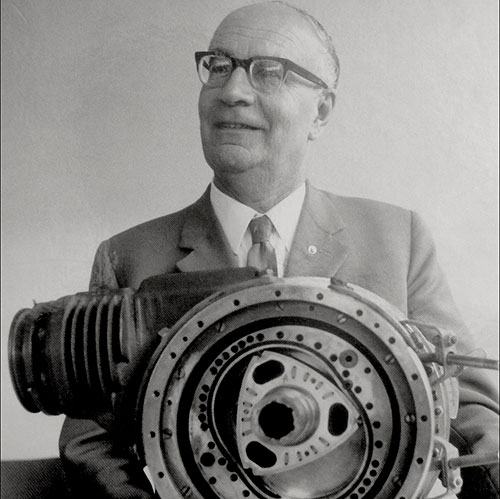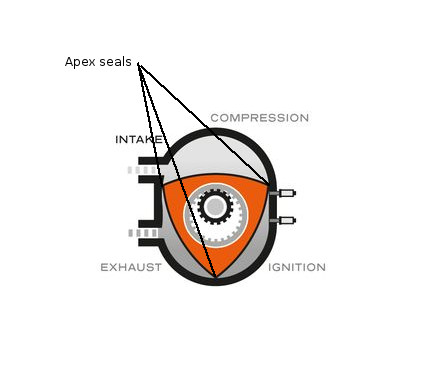The Wankel (Rotary) Engine
High hopes and crushed dreams
Motorcycle engine – what words spring to mind when you hear that? Cylinders? Capacity? Two-stroke? Four-stroke? How about Wankel? Possibly not, but since the introduction of internal combustion engines, many have tried their hand at developing a rotary engine – and none was as promising as Felix Wankel's design. Dubbed the “engine of the future”, the motorcycling world went mad for this mid-20th-century invention, so what happened to it? And why aren't we all riding on Wankel-engined machines today?
In order to understand the theory of the engine and its level of practicality in motorcycle application, it's important to grasp what, exactly, a Wankel engine is. The Wankel engine is a type of four-stoke internal combustion engine which works in a similar way to a reciprocating piston engine, executing the four processes of intake, compression, ignition (combustion) and exhaust. But, while the piston engine has its processes take place consecutively in one chamber, the Wankel engine uses a trochoid (curved) chamber, with its triangular-shaped rotor separating the four strokes into their own housing.
Not so Wankel, after all...
The Wankel engine was invented by a German engineer, Felix Wankel. It was first patented in 1929, but it wasn't until 1950 that he was able to receive the necessary funding to develop it. Working in conjunction with NSU Motorenwerke AG, Wankel developed his engine, the DKM 54 motor. Wankel's engine was able to reach high revolutions per minute and was naturally balanced, but it contained lots of parts and would need to be taken apart in order to change the spark plugs - drawbacks that NSU deemed undesirable.
Working at the same time for NSU was a man named Hanns Dieter Paschke, who, unbeknown to Wankel, was also given the task of developing Wankel's engine. He designed the KKM 57 P engine, which was much simpler, and would be the one that NSU would license to companies all over the world. Thus, the Wankel engine we see today was not so "Wankel" as it should have been and could very easily be renamed as the Paschke engine. When Felix Wankel discovered this secret development he was understandably angry, commenting to Paschke 'you have turned my race horse into a plow mare'.
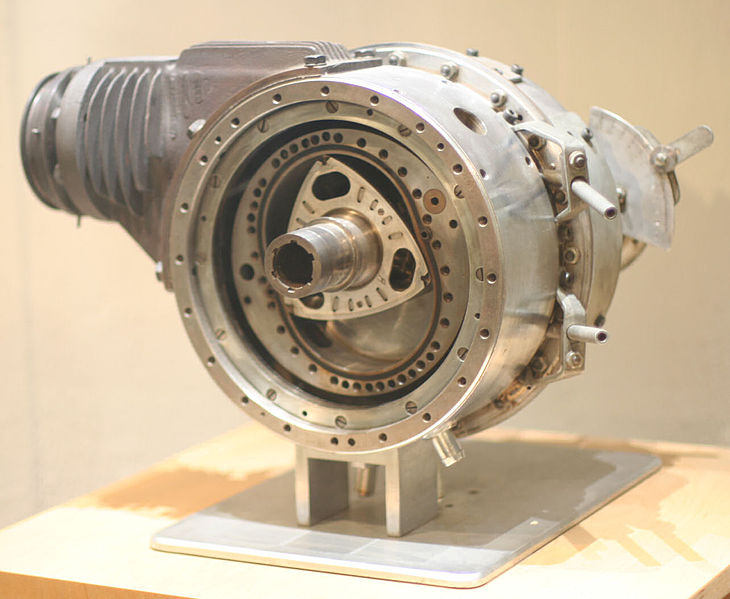
DKM 54
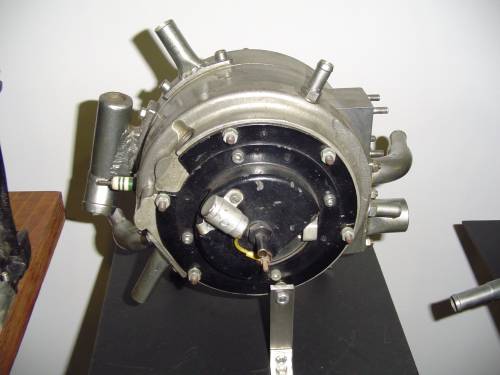
KKM 57 P
Interesting fact: The Wankel engine wasn't the first rotary engine to be invented, and shouldn't be confused as such. It was, though, the first pistonless rotary engine.
"The engine of the future"
The theory behind the Wankel engine was that it could perform similarly to the piston engine, but without vibration and without the mechanical stress. Because the Wankel engine had two gears, a larger inner gear with 30 teeth and a smaller outer gear with 20 teeth, the gear ratio would be 1:3. The smaller gear (with a connected shaft) would turn once for every three turns of the larger gear. With the rotor running at only 1,000rpm, the engine could run at 3,000rpm; meaning it would run less stressed and with all parts rotating in one direction, as opposed to the piston engine in which the pistons constantly change direction.
Interesting fact: The Wankel engine is the only internal combustion engine invented in the 20th century to go into production.
The Wankel engine would also benefit from being much smaller (about a third of the size) than a piston engine. And its simple design promised ease of production as well as consumer reliability and durability. A win-win situation. In reality this was not so simple; the engines' design would create problems that many manufacturers who used it would battle to combat.
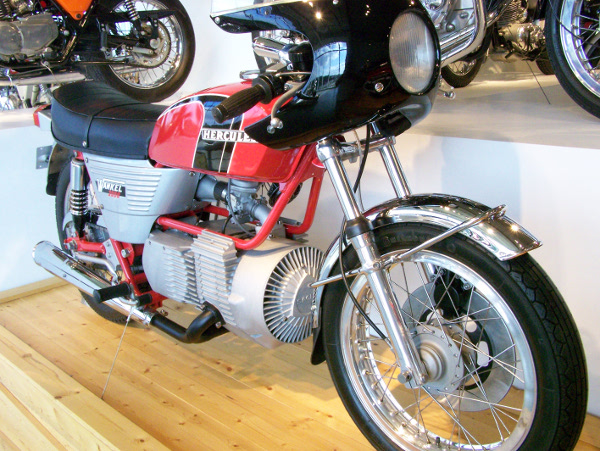
DKM Hercules W 2000
The first motorcycle to be produced with the Wankel engine was IFA/MZ's BK 351 model, made in 1960. Things seemed promising for MZ, who had taken out a license for the design, believing – like many others at the time - that it would be the engine of the future. A few other manufacturers also began selling rotary engined machines: DKW, Suzuki, and Norton, among others.
The negatives of Wankels
Manufacturers soon began to discover the engines' negatives. The first being its seals. The Wankel engines' triangular rotor would have seals at its corners which would divide the chamber into three parts, each one performing its own part of the intake, compression, ignition and exhaust process. These seals were vibrating so much that it caused “chatter marks” in the inner epitrochoid surface. Over the next few decades, the Wankel engines' seals changed in material, thickness and weight in an attempt to solve this issue.
The sealing would never be perfect, however, and this also led to leakage between the chambers, meaning that the engine would have a much higher percentage of unburned fuel mixture than the piston engine.
The functionality of the Wankel engine also meant that it would face problems with balancing temperatures. Because each part of the four strokes would take place in its own housing, the intake would face freezing temperatures while the exhaust housing would overheat. The piston engine didn't have this problem, as all the processes took part in the same chamber, so temperatures would average better. This caused further problems to the wearing of the seals, and to the rotor housing as well.
Wankels in Motorcycles
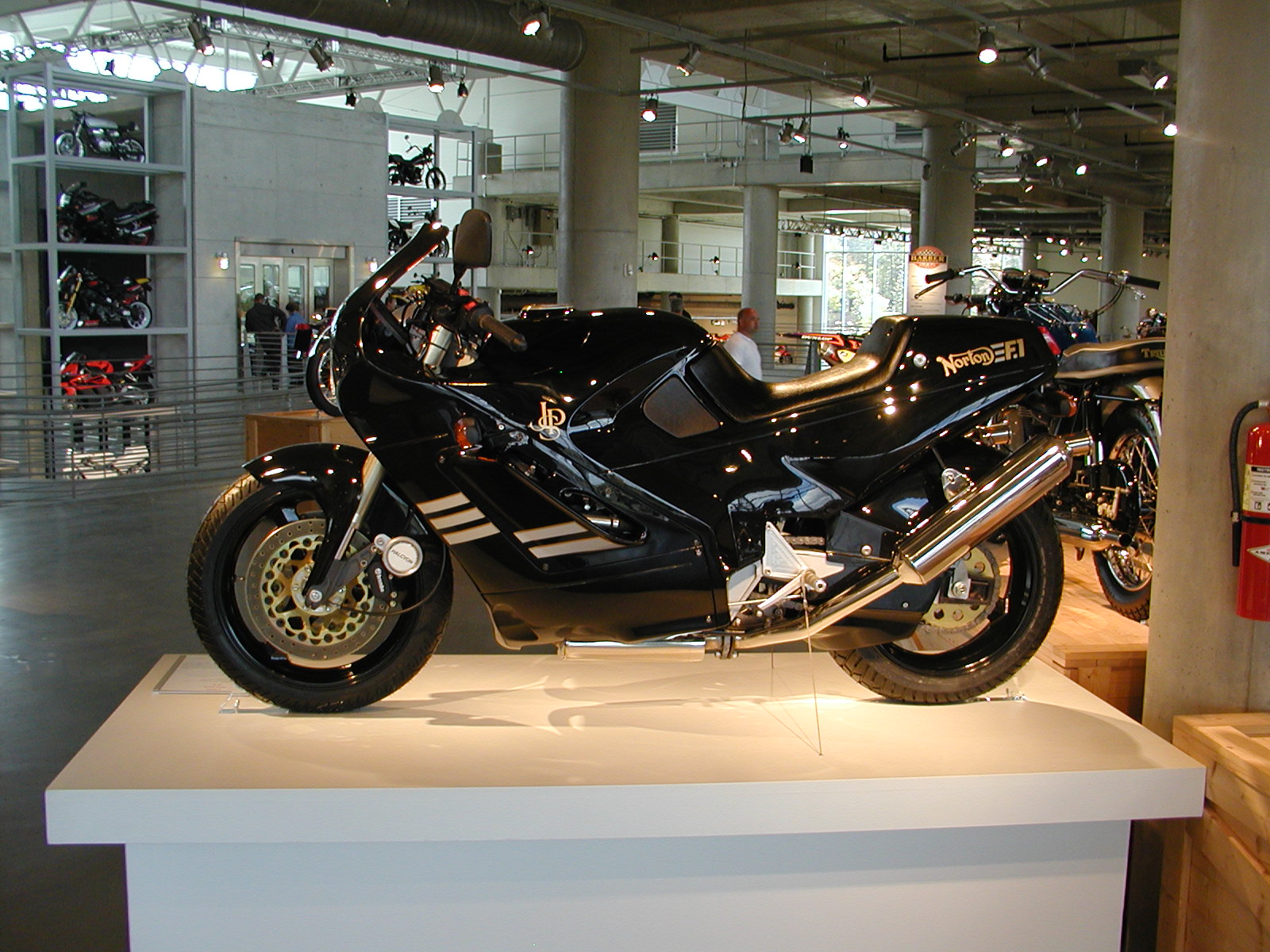
Norton F1
Norton developed a two-rotor Wankel engine – used in the Commander and F1 – but with a plenum chamber to improve air cooling. Suzuki was the only one of the four Japanese giants to produce a Wankel-engined motorcycle, the RE-5 – but it was complex, heavy and expensive. It was also produced in the same year as the oil crisis – 1973 – which led to further wariness of the engine's poor fuel economy. Sales weren't great and Suzuki subsequently stopped making models. MZ continued to work on improving the Wankel engine, but the costs required in continuously changing and testing different materials to help with overheating and sealing proved too much for them.
The Wankel engine has been used in all types of vehicles, with Mazda being the most successful manufacturer to take it on, using it – with much modification - in many of its cars. The engine has been praised for its use in aircraft, as its inability to seize (rotor casings expand more than rotors) made it safer than the piston engine, its benefits outweighing the negatives for this application.
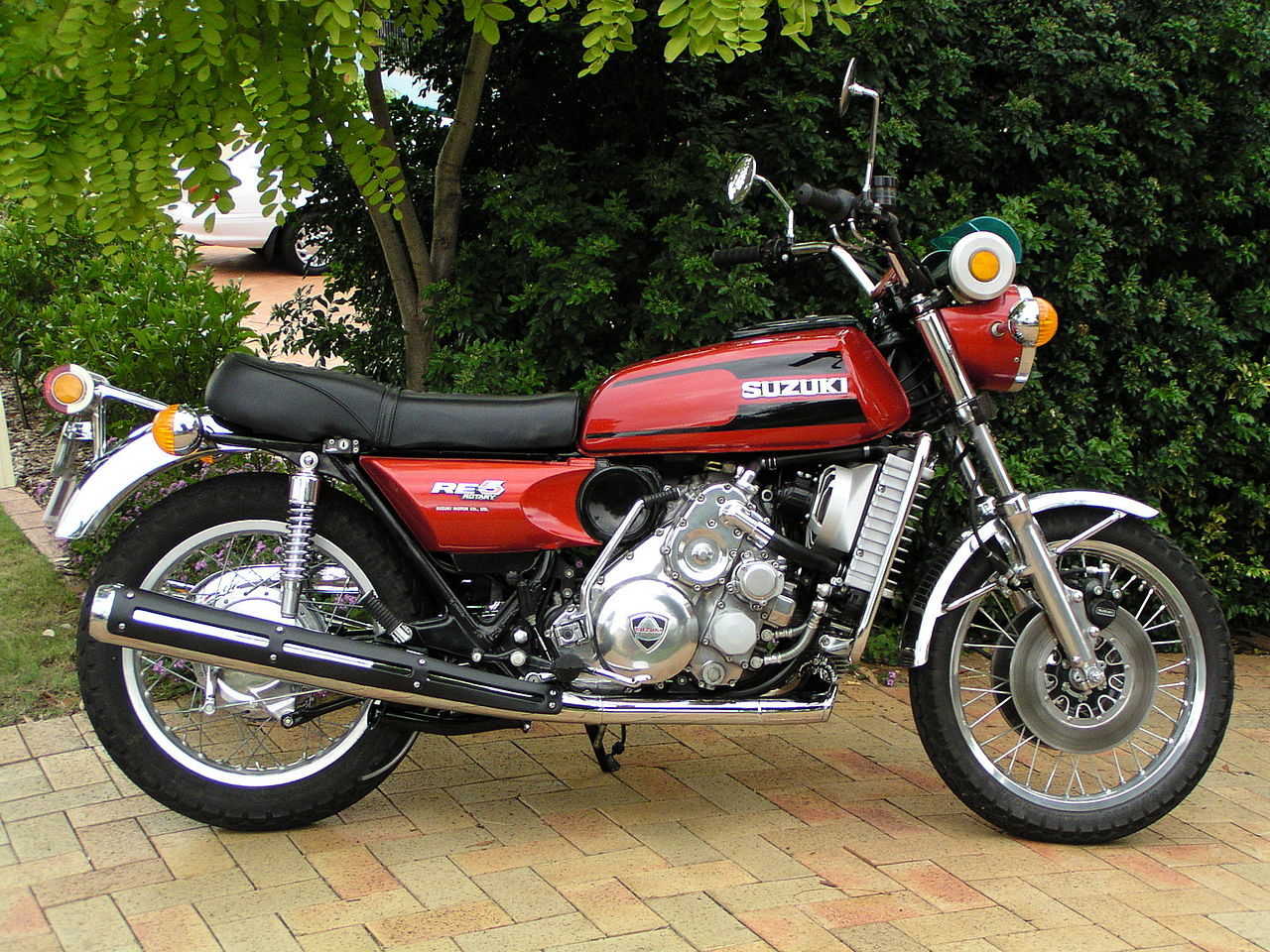
Suzuki RE5
Production motorcycles was where the Wankel engine suffered, as many manufacturers struggled with the cost of testing and subsequent improvement in order to make their machines road legal. Many prototype motorcycles have been made over the years, but very few have been produced.
The engine of the future disappointingly turned out to be the engine of the moment, as far as bikes were concerned – but, at least this “plow mare” kept its original name, and that, if anything, should provide some solace to Felix Wankel. I mean, who ever heard of a Paschke engine anyway? And what a boring name that would have been in comparison...
Comments
11/02/16 relaibility issues ruined the wankel. look how cheap the mazda rx8 is.
11/02/16 Good cars though when working. The engine has very little torque too and requires more care and attention than a piston engine. Like topping the oil up regularly and keeping the ignition system working well, plug changes, coil changes etc.
11/02/16 yep no doubt, they rev well too, almost like a car two stroke. but i often see them needing rebuilds at 60k miles which is never good
11/02/16 I was going to mention the success of the RX8, although not as popular as it might have been. Maybe owners find they just can't afford putting in as much oil as fuel (Ok, a bit of an exaggeration!).
11/02/16 i think the real benchmark of how good a car really is, is its resale value. those little mazdas are seriously cheap because people dont want the wankel thats in them
12/02/16 The other problem is they only measure one combustion chamber to get the cc. The fact it should be measured as a 2.6 might explain 16mpg
12/02/16 The fuel economy in a rx8 is dreadful... esp when compared to other cars of its class. Oh and yes reliability of the engines is a well known issue.
11/02/16 In short, because it needed to run oil in the mix and would never pass emissions, because they never really solved the problems of rotor tip wear, and lastly because fuel efficiency was poor. It was really a collection of solutions looking for a problem.
11/02/16 The name didn't help much
12/02/16 Forget cars, they've got plenty of room for the inferior piston engine. Rotary bikes are...fantastic. Small, light, sound great and smell wonderful!
12/02/16 Great engine but serious service issues ask any mazda RX Owner . Surprised that they haven't sorted it out by now
12/02/16 wankel engines are used a lot today but unfortunately not in bikes. the norton design was bought up and modified for military UAV drones and several different sizes are still. made in the UK.
12/02/16 Alvis bought the design because the very low vibration was ideal for drones carrying hi-res cameas
12/02/16 they are not the only ones
12/02/16 Runs at very high temperatures,emissions as well,but the idea is fantastic,just practicality that's a problem
12/02/16 There's not enough oil in the world
12/02/16 How many strokes constitute a wankel?
12/02/16 Technically 3... twin rotor would be equivalent of a 6 cylinder. Capacity is also different. . Classed as a 1300cc but is equivalent to 2600cc. All this is due to the "strokes" per revolution of the crankshaft.
12/02/16 Had a go in a Citroen GS Wankel once, sounded like a jet!
12/02/16 A fantastic engine ,they put i think 5 together in a Audi,and the power was unlimited ,as you say the tips had problems,i had to put redex in the plug holes and push the tips up and down to loosen,then they would start ok.When i worked at an Audi agents many years ago.
12/02/16 NSU RO80 Cars.
12/02/16 The Heskith ran on this design, didn't make the grade to expensive to build
13/02/16 Rotory engines are still used today. Mazda use them in their cars. And Norton used them in the 90s on their race bikes. They are great alternative to the conventional combustion engine. Less moving parts. Higher revs.
13/02/16 Rode a rotary Norton for the rac in the 80s and they had plenty of power just kept going
13/02/16 They drink fuel solve that and we will all use them
13/02/16 When the tips of the rotors wear out, the engine is useless. Also a very high furl consumption.
13/02/16 I recall Steve spray and Trevor Nation flying past me down snetterton straight on the nortons wankel engined "750"cc they were quicker than the RC30 and OWO1 of its era,, sounded awesome too !!!!
13/02/16 I came close to buying a mint Suzuki RE5 back in 1981, I bought a GT750L kettle instead for £500, which was £200 cheaper than the rotary.
13/02/16 Umm... because it was a bit shit, and that's from someone who likes them.
14/02/16 Not one mention in the article above about Mazda who bought the rights to the rotary after the war and discovered that it was, in its present form, absolutely shite. The fifty rotary Warriors solved the inherent problems in Wankels engine and Mazda have produced hundreds of thousands of the things, I've pulled FB engines in bits that have done 160,000 miles plus. Mazda are the experts in rotary power and let's see how the new RX does. The engine without ancillaries weighs less than 75kilos and is capable in two rotor form of producing 700bhp+. And don't forget the 787B, a four rotor that embarrassed the might of Mercedes-Benz. So they got it banned, sounds like sour grapes to me. Also, the rotary engine is a four stroke having four separate cycles within the engine, none of which -unless you peripheral port it -overlap as they do in a two stroke. The only thing that gave rotaries a bad name was the NSU Ro80. Now those really were crap
14/02/16 And as for as oil consumption goes, the tip injection system works on 1%,as the likes of Mercedes-Benz, Audi, Porsche etc seem to find its acceptable for their super clean engines to burn engine oil at a rate of 600-1000miles per litre it's a bit rich saying that Mazda rotaries burn lots of oil
14/02/16 Look at the NSU Ro80.. friend had a 1973 one in the 80s it still looked modern.
15/02/16 one problem with rotary engines was/is a lack of engine braking leading to huge brakes and a high level of brake wear. I remember trevor nation on a norton leaving every thing for dead at Brands on the straight but struggling to stop it at the end suffering brake fade late on in the race. Also acceptance by the general masses who don't like change , a what engine?, it took an age to get diesel engine cars accepted and its a bit like hybrids today plenty of models but not everyone's cup of tea.


